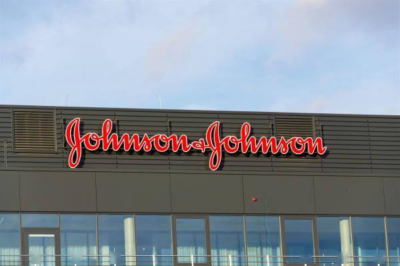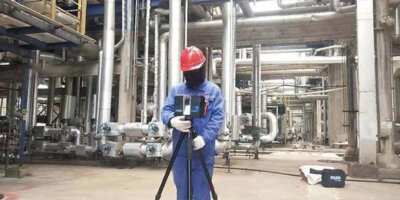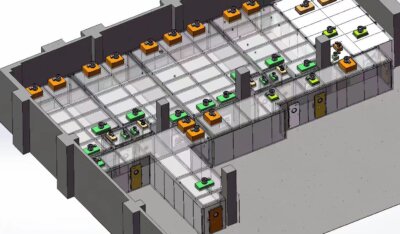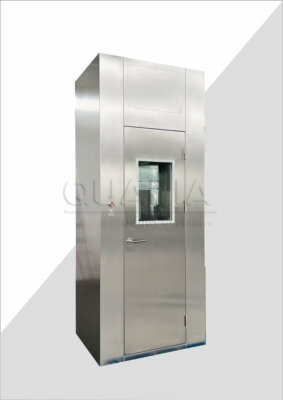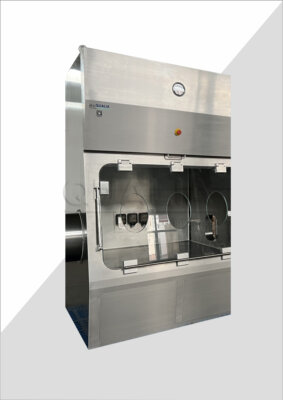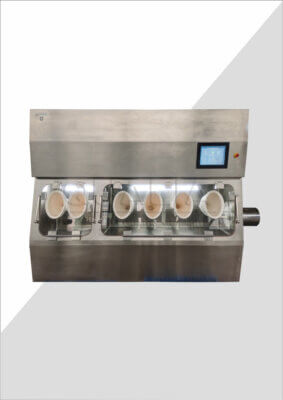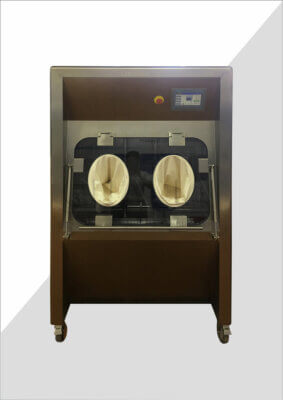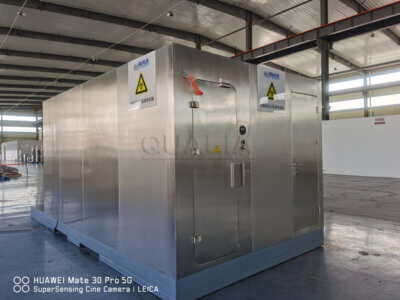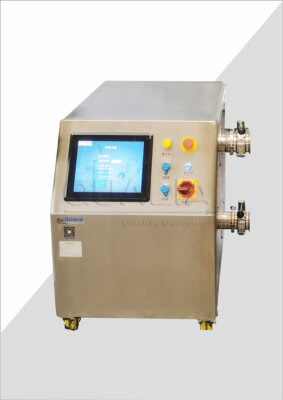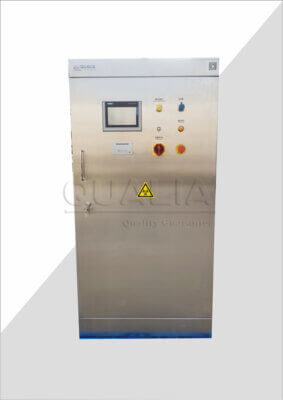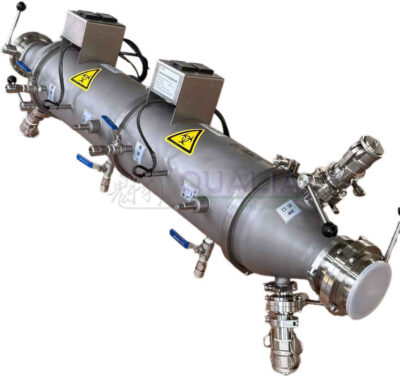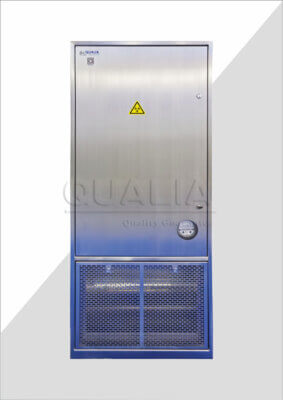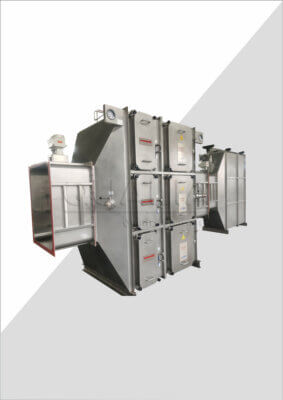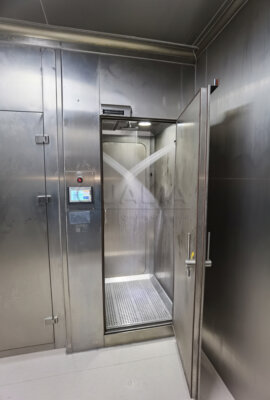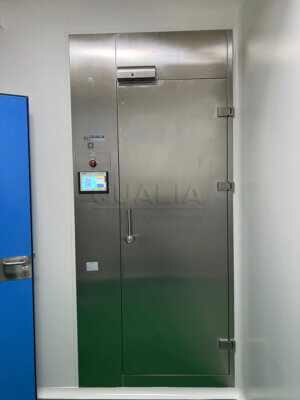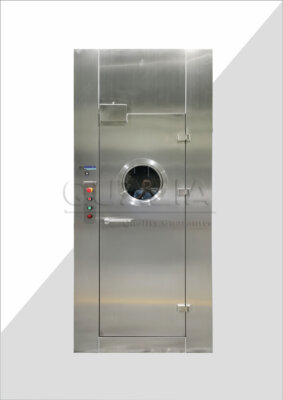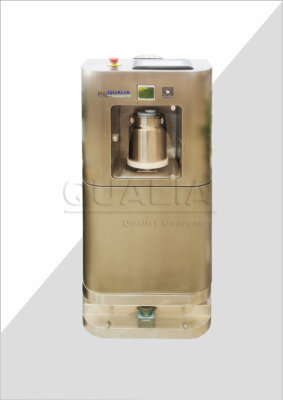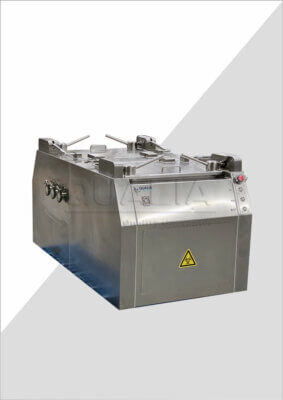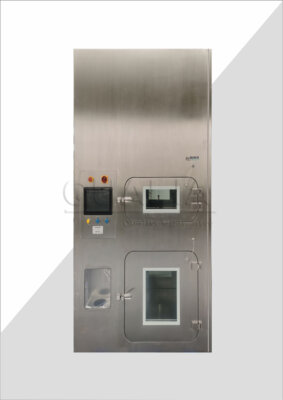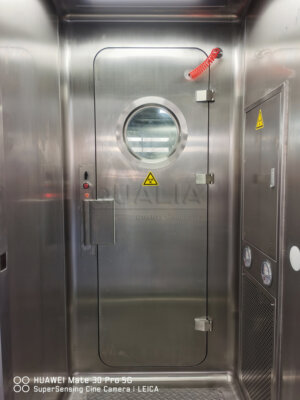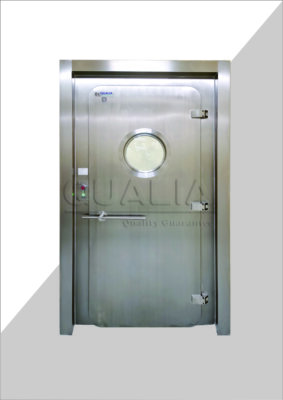Selecting the right pneumatic seal for your APR (Air Pressure Relief) doors can significantly impact your facility’s containment performance, operational costs, and long-term reliability. As facilities managers and engineers face increasing pressure to optimize budgets while maintaining strict safety standards, the choice between generic APR door seals and established brand name options has become more complex than ever.
Problem: Many facilities struggle with seal failures that compromise containment integrity, leading to costly downtime, regulatory compliance issues, and potential safety hazards. The challenge intensifies when budget constraints push decision-makers toward lower-cost alternatives without clear performance comparisons.
Agitation: A single seal failure can result in facility shutdowns costing thousands of dollars per hour, while non-compliance with containment standards can trigger regulatory penalties and threaten operational licenses. The consequences of choosing inadequate sealing solutions extend far beyond initial cost savings.
Solution: This comprehensive analysis examines the critical performance factors, cost implications, and reliability considerations that should guide your decision between generic and brand name pneumatic seal options, providing you with the framework needed to make informed choices for your specific applications.
QUALIA Bio-Tech has observed these challenges across numerous installations, where the right seal selection proves crucial for maintaining optimal facility performance.
What Are APR Door Pneumatic Seals and Why Do They Matter?
APR door pneumatic seals represent critical components in containment systems, designed to maintain precise pressure differentials between controlled environments and adjacent spaces. These specialized sealing systems utilize compressed air to create reliable barriers that prevent cross-contamination while allowing controlled access.
Understanding Pneumatic Seal Technology
The fundamental principle behind pneumatic seals involves an inflatable bladder system that expands to create complete contact with the door frame perimeter. When activated, compressed air fills the seal chamber, forcing the flexible material against the sealing surface to establish an airtight barrier. This mechanism provides superior sealing performance compared to traditional mechanical seals, particularly in applications requiring frequent door operation.
Modern pneumatic seals incorporate advanced materials engineered to withstand repeated inflation cycles while maintaining consistent sealing pressure. The typical operating pressure ranges from 15-30 PSI, with higher-grade seals capable of handling pressures up to 50 PSI for specialized applications.
Critical Applications in Controlled Environments
Pharmaceutical manufacturing facilities rely heavily on pneumatic seals to maintain cleanroom classifications and prevent product contamination. In our experience, facilities achieving ISO 14644 Class 5 cleanliness standards consistently utilize properly specified pneumatic sealing systems for their critical access points.
| Application Type | Typical Pressure Range | Seal Durability Requirements |
|---|---|---|
| Pharmaceutical Manufacturing | 20-35 PSI | 100,000+ cycles |
| Research Laboratories | 15-25 PSI | 50,000+ cycles |
| Biocontainment Facilities | 25-50 PSI | 200,000+ cycles |
| Food Processing | 15-30 PSI | 75,000+ cycles |
Performance Impact on Facility Operations
The effectiveness of APR door seals directly influences energy consumption, as inadequate sealing forces HVAC systems to work harder maintaining pressure differentials. Industry data indicates that properly functioning pneumatic seals can reduce energy costs by 15-25% compared to facilities with compromised sealing systems.
It’s worth noting that seal performance degradation often occurs gradually, making regular monitoring essential for maintaining optimal operation. Facilities implementing proactive seal maintenance programs report 40% fewer unexpected failures compared to those using reactive maintenance approaches.
How Do Generic APR Door Seals Compare to Brand Name Options?
The distinction between generic and brand name pneumatic seals extends beyond simple cost differences, encompassing material quality, manufacturing precision, and performance consistency. Understanding these variations proves essential for making informed procurement decisions.
Material Quality and Construction Standards
Brand name manufacturers typically utilize proprietary rubber compounds specifically formulated for pneumatic seal applications. These materials undergo extensive testing to ensure compatibility with common sterilization chemicals, temperature fluctuations, and repeated stress cycles. Generic alternatives often employ standard industrial rubber compounds that may not offer the same level of performance or longevity.
According to independent testing conducted by the International Pharmaceutical Engineering Society, brand name seals demonstrate 30-40% longer service life in accelerated aging tests compared to generic alternatives. This performance difference becomes particularly significant in high-use applications where seal replacement costs extend beyond material expenses to include labor and facility downtime.
Manufacturing Precision and Quality Control
Brand name manufacturers maintain tighter dimensional tolerances, ensuring consistent fit and performance across production batches. Generic seal manufacturers may exhibit greater variability in critical dimensions, potentially affecting installation ease and sealing effectiveness.
Performance Consistency Analysis
“The most significant difference we observe between generic and brand name seals lies in performance consistency over time. While initial performance may appear similar, brand name products maintain their sealing characteristics much longer under operational stress.” – Dr. Sarah Mitchell, Containment Systems Engineer
A recent study analyzing seal performance across 50 pharmaceutical facilities revealed that generic seals required replacement 60% more frequently than brand name alternatives, despite initial cost savings of 40-50%.
| Performance Metric | Generic Seals | Brand Name Seals |
|---|---|---|
| Average Service Life | 18-24 months | 30-42 months |
| Failure Rate (per 1000 cycles) | 0.8-1.2 | 0.3-0.5 |
| Pressure Retention (after 50,000 cycles) | 85-90% | 95-98% |
Technical Support and Documentation
Brand name manufacturers typically provide comprehensive technical documentation, including installation guides, maintenance schedules, and troubleshooting resources. Generic suppliers often offer limited technical support, placing greater responsibility on facility staff to develop maintenance protocols and resolve performance issues.
The availability of detailed specifications becomes crucial when integrating seals into existing systems or when regulatory audits require documentation of component performance characteristics. Brand name products generally include detailed certificates of compliance and performance data that generic alternatives may lack.
What Are the Key Performance Factors in APR Door Seal Selection?
Selecting optimal pneumatic seals requires careful evaluation of multiple performance criteria that directly impact facility operations and long-term costs. These factors work in combination to determine overall system effectiveness and reliability.
Pressure Rating and Containment Capability
The primary function of any pneumatic seal involves maintaining specified pressure differentials under varying operational conditions. Apr door seal comparison studies consistently identify pressure rating as the most critical performance factor, with inadequate ratings leading to containment failures and regulatory non-compliance.
Quality seals maintain consistent pressure retention across their operational lifespan, while inferior products may experience gradual pressure loss that compromises containment integrity. Testing protocols should evaluate pressure retention after extended cycling to identify potential degradation patterns.
Chemical Compatibility and Environmental Resistance
Cleanroom and laboratory environments expose seals to various cleaning agents, sterilization chemicals, and process compounds. Material compatibility becomes crucial for preventing premature degradation and maintaining seal integrity throughout the service life.
Fluorocarbon-based seal materials offer superior chemical resistance compared to standard rubber compounds, particularly in applications involving strong oxidizing agents or organic solvents. However, these advanced materials typically command premium pricing that may not be justified for all applications.
Temperature Performance Range
Operating temperature ranges significantly impact seal performance and longevity. Facilities with temperature-controlled environments typically operate within moderate ranges, while specialized applications may require seals capable of withstanding extreme conditions.
Cycle Life and Durability Requirements
The expected number of door operations directly influences seal selection criteria. High-traffic applications require seals engineered for extended cycle life, while occasional-use installations may accommodate lower-grade alternatives without significant performance impact.
In our experience, facilities underestimating cycle requirements often encounter premature seal failures that result in unexpected replacement costs and operational disruptions. Accurate usage projections prove essential for optimal seal selection and lifecycle cost management.
Which Cost Considerations Should Drive Your Decision?
Understanding the complete cost structure of pneumatic seal ownership extends beyond initial purchase price to encompass installation, maintenance, and replacement expenses throughout the product lifecycle. This comprehensive analysis reveals the true economic impact of seal selection decisions.
Initial Purchase Price Analysis
Generic seals typically offer 40-60% cost savings compared to brand name alternatives, creating immediate budget relief for cost-conscious facilities. However, this initial advantage must be evaluated against long-term performance and replacement frequency to determine actual value.
| Cost Component | Generic Seals | Brand Name Seals |
|---|---|---|
| Initial Purchase | $150-250 | $350-450 |
| Installation Labor | $200-300 | $200-300 |
| Expected Replacements (5 years) | 2-3 times | 1-2 times |
| Total 5-Year Cost | $750-1,100 | $700-1,200 |
Installation and Labor Costs
Professional installation represents a significant portion of total seal costs, particularly for complex door systems requiring specialized tools and expertise. Generic seals may require additional fitting and adjustment time due to dimensional variations, potentially offsetting initial cost savings through increased labor expenses.
Facilities with experienced maintenance staff may achieve better results with generic alternatives, while those relying on external contractors often find brand name products more cost-effective due to predictable installation requirements.
Maintenance and Operational Expenses
Routine maintenance requirements vary significantly between generic and brand name seals. Superior materials and construction typically reduce maintenance frequency while providing more predictable service intervals.
A pharmaceutical facility case study comparing seal types across identical door installations found that generic seals required 45% more maintenance interventions over a two-year period, resulting in $3,200 additional labor costs despite initial savings of $1,800 on seal purchases.
Replacement and Lifecycle Costs
The frequency of seal replacement significantly impacts long-term ownership costs. While generic seals offer lower individual replacement costs, more frequent replacements can result in higher total expenses when labor and downtime costs are considered.
It’s worth noting that emergency seal replacements typically cost 2-3 times more than planned replacements due to overtime labor, expedited shipping, and potential production impacts. Brand name seals’ greater reliability helps minimize these costly emergency situations.
How Do Installation and Maintenance Requirements Differ?
Installation and maintenance procedures vary significantly between generic and brand name pneumatic seals, affecting both immediate implementation costs and long-term operational efficiency. Understanding these differences helps facilities prepare appropriate resources and develop effective maintenance strategies.
Installation Complexity and Requirements
Brand name seals typically include comprehensive installation documentation with step-by-step procedures, dimensional drawings, and troubleshooting guides. These resources reduce installation time and minimize the risk of improper mounting that could compromise performance.
Generic seals often require more extensive preparation and fitting work due to dimensional variations between production batches. Installation teams must invest additional time in measurements, adjustments, and verification procedures to ensure proper seal alignment and function.
Specialized Tools and Equipment Needs
Premium seal manufacturers often provide specialized installation tools designed specifically for their products, ensuring optimal installation results and reducing the risk of damage during mounting. Generic alternatives may require improvised tools or standard equipment that may not provide ideal results.
Maintenance Protocols and Procedures
Preventive maintenance requirements differ substantially between seal types. Brand name products typically include detailed maintenance schedules with specific procedures for inspection, cleaning, and adjustment. Generic alternatives may require facility staff to develop custom maintenance protocols based on observed performance patterns.
“We’ve found that facilities using generic seals spend approximately 30% more time on maintenance activities per seal compared to those using brand name products, primarily due to the need for more frequent inspections and adjustments.” – Mark Thompson, Facility Maintenance Director
Technical Support Availability
Access to technical support becomes crucial when installation or maintenance issues arise. Brand name manufacturers typically provide dedicated technical support teams with extensive product knowledge and troubleshooting expertise. Generic suppliers may offer limited support, requiring facility staff to resolve issues independently.
A recent survey of facility managers found that 78% rated technical support availability as a critical factor in seal selection, with poor support experiences leading to higher total ownership costs through extended downtime and inefficient problem resolution.
What Are the Long-term Reliability Implications?
Long-term reliability represents perhaps the most significant differentiator between generic and brand name pneumatic seals, with implications extending far beyond simple replacement frequency to encompass regulatory compliance, operational efficiency, and facility reputation.
Failure Pattern Analysis
Generic seals often exhibit less predictable failure patterns, with some units failing prematurely while others exceed expected service life. This variability complicates maintenance planning and increases the risk of unexpected failures during critical operations.
Brand name seals typically demonstrate more consistent degradation patterns, allowing facilities to implement proactive replacement programs that minimize operational disruptions. Predictable failure modes enable better inventory management and maintenance scheduling.
Regulatory Compliance Considerations
Pharmaceutical and research facilities must maintain detailed documentation of component performance for regulatory compliance. Brand name seals typically include comprehensive documentation packages that simplify audit preparation and demonstrate compliance with industry standards.
Generic alternatives may lack detailed performance data or compliance certifications, potentially creating documentation gaps that complicate regulatory reviews. The risk of compliance issues must be weighed against cost savings when selecting seal alternatives.
Performance Degradation Characteristics
The rate of performance degradation varies significantly between seal types. Superior materials and construction typically result in gradual, predictable performance decline that allows for planned maintenance and replacement.
In our experience, facilities using high-quality pneumatic seals report 25-30% fewer containment breaches compared to those using generic alternatives, primarily due to more consistent performance throughout the service life.
Impact on Facility Operations
Seal reliability directly affects facility uptime and operational efficiency. Unexpected failures can trigger emergency shutdowns, particularly in containment applications where seal integrity is critical for personnel safety and environmental protection.
A biocontainment facility case study documented the impact of seal selection on operational reliability over a three-year period. The facility experienced 40% fewer unplanned shutdowns after upgrading from generic to brand name seals, resulting in improved productivity and reduced emergency maintenance costs.
When Should You Choose Generic vs Brand Name Solutions?
The decision between generic and brand name pneumatic seals depends on specific application requirements, operational priorities, and long-term facility goals. Understanding when each option provides optimal value helps facilities make informed decisions aligned with their unique circumstances.
Applications Favoring Generic Solutions
Generic seals may provide adequate performance for low-criticality applications where occasional failures don’t compromise safety or operations. Administrative areas, storage facilities, and non-critical access points often represent suitable applications for cost-effective generic alternatives.
Facilities with experienced maintenance staff and comprehensive in-house technical capabilities may successfully utilize generic seals by developing custom maintenance protocols and replacement schedules. The ability to manage variability in performance and reliability becomes crucial for success with generic alternatives.
Scenarios Requiring Brand Name Products
High-criticality applications demand the consistency and reliability that brand name seals provide. Pharmaceutical manufacturing, research laboratories, and biocontainment facilities typically require the superior performance characteristics available from established manufacturers.
| Application Criticality | Recommended Seal Type | Key Decision Factors |
|---|---|---|
| Mission Critical | Brand Name | Reliability, compliance, support |
| High Importance | Brand Name | Performance consistency, documentation |
| Moderate Importance | Either Option | Cost vs. performance trade-off |
| Low Criticality | Generic | Cost optimization primary concern |
Decision Framework and Evaluation Criteria
Developing a structured evaluation process helps facilities make optimal seal selection decisions. Consider creating a weighted scoring system that addresses performance requirements, cost constraints, and operational priorities specific to your facility.
Generic vs brand pneumatic seals evaluation should include total cost of ownership calculations, risk assessments, and alignment with facility maintenance capabilities. The decision framework should account for both quantitative factors like cost and cycle life, and qualitative considerations such as technical support quality and regulatory compliance requirements.
Implementation Strategies
Facilities may benefit from implementing a tiered approach to seal selection, using brand name products for critical applications while utilizing generic alternatives for less demanding installations. This strategy optimizes both performance and cost across the entire facility.
For facilities considering generic alternatives, implementing a pilot program with limited installations allows evaluation of actual performance before committing to broader deployment. Monitor key performance indicators including failure rates, maintenance requirements, and overall satisfaction with supplier support.
Conclusion
The choice between generic APR door seals and brand name options ultimately depends on balancing immediate cost savings against long-term performance, reliability, and operational requirements. While generic alternatives offer attractive initial pricing, brand name products typically provide superior consistency, longer service life, and comprehensive technical support that can result in lower total ownership costs.
Key decision factors include application criticality, maintenance capabilities, regulatory requirements, and risk tolerance for unexpected failures. Facilities with mission-critical containment requirements generally benefit from brand name products, while less demanding applications may successfully utilize generic alternatives with appropriate maintenance protocols.
The most successful facilities often implement hybrid approaches, using premium seals for critical applications while optimizing costs through generic alternatives in suitable locations. This strategy maximizes both performance and value across diverse facility requirements.
As pneumatic seal technology continues evolving, manufacturers are developing more cost-effective solutions that bridge the performance gap between generic and premium options. Staying informed about these developments helps facilities make optimal decisions aligned with changing technology and operational requirements.
Consider your facility’s specific needs, evaluate total ownership costs comprehensively, and select APR door pneumatic sealing solutions that best support your operational goals and budget constraints. The right seal selection today establishes the foundation for reliable, efficient facility operations for years to come.
What factors will be most important in your next pneumatic seal selection decision?
Frequently Asked Questions
Q: What are Generic APR Door Pneumatic Seals, and how do they compare to brand name options?
A: Generic APR door pneumatic seals are alternatives to brand name options, offering similar functionality at potentially lower costs. Both types use inflatable seals to create airtight barriers around doorframes, but generic options may not match the quality, durability, or brand reputation of name-brand seals. However, they can still provide effective containment and are suitable for environments where cost is a significant factor.
Q: What are the key benefits of using Generic APR Door Pneumatic Seals?
A: The key benefits of generic APR door pneumatic seals include cost-effectiveness, quick inflation and deflation cycles, and the ability to provide airtight containment. They are designed to work well in high-traffic areas and controlled environments, though they may require more maintenance compared to brand name options. Some benefits include:
- Cost Efficiency: Often cheaper than brand name options.
- Quick Operation: Fast inflation and deflation for efficient use.
- Adaptability: Suitable for high-traffic or wheeled equipment environments.
Q: How do Brand Name Options differ from Generic APR Door Pneumatic Seals?
A: Brand name options typically offer higher quality materials, better durability, and enhanced performance compared to generic APR door pneumatic seals. They often feature advanced materials like stainless steel and high-density EPDM for long-lasting performance. Brand name seals are more likely to include features such as automatic pressure control and emergency deflation valves, making them ideal for highly controlled environments. However, these advantages come at a higher cost.
Q: What environments are Generic APR Door Pneumatic Seals most suitable for?
A: Generic APR door pneumatic seals are most suitable for environments where budget is a concern but some level of containment is still necessary. They can be used effectively in laboratories, cleanrooms, and other controlled areas where high-end features are not a priority. However, for environments requiring the highest level of containment and reliability, brand name options may be preferable.
Q: What factors should I consider when choosing between Generic and Brand Name APR Door Pneumatic Seals?
A: When deciding between generic and brand name APR door pneumatic seals, consider the following factors:
- Budget: Generic options are typically cheaper.
- Performance Requirements: Brand names offer superior quality and durability.
- Environmental Conditions: If high containment and reliability are crucial, brand name options are better.
- Maintenance Needs: Brand names usually require less maintenance.
- Brand Reputation: Consider the reliability and support offered by the manufacturer.
External Resources
How-To: Choose the Right Door Seal | Duck Brand – Explains different types of door seals offered by a brand manufacturer and how to select the best option, including considerations of materials and applications for both generic and branded products.
Door Seal Procurement and Acquisition (Best source and supplier) – A forum discussion comparing experiences sourcing generic and brand name door seals, highlighting cost, fit, and supplier reliability.
Types of Weatherstripping and Tips for Installation | Constellation – Describes the major types of weatherstripping materials for doors, comparing effectiveness and durability of various generic and branded solutions.
DOOR WEATHER SEALS COMPARISON CHART | Cal-Royal – Provides a detailed comparison chart of different door weather seal models and brands, allowing direct evaluation of features and specifications.
Ultimate Guide to Door Weatherstripping: Best Option for Your Home – A comprehensive guide outlining options for door weatherstripping, including discussions of performance and value when choosing between generic and branded seal products.
How to Choose the Right Weatherstripping for Doors and Windows | Bob Vila – Reviews and compares various weatherstripping products, noting key factors in choosing between generic versus brand name options for both cost and durability.
Related Contents:
- What Are APR Door Pneumatic Seals and How They Work
- Understanding Pneumatic APR Door Seal Technology
- APR Door Seal Alternatives | Universal Pneumatic Solutions
- Pneumatic APR Door Seals Cost | Pricing Guide | ROI Analysis
- Pneumatic APR Door Seal Performance Metrics | Technical Specifications
- Industrial APR Door Seals | Purchase Guide | Specification Comparison
- Manufacturing APR Door Seal Systems | Industrial Applications
- Pneumatic Seal APR Doors: Complete Guide to Industrial Applications
- Best APR Door Pneumatic Seal Suppliers | Vendor Selection Guide

